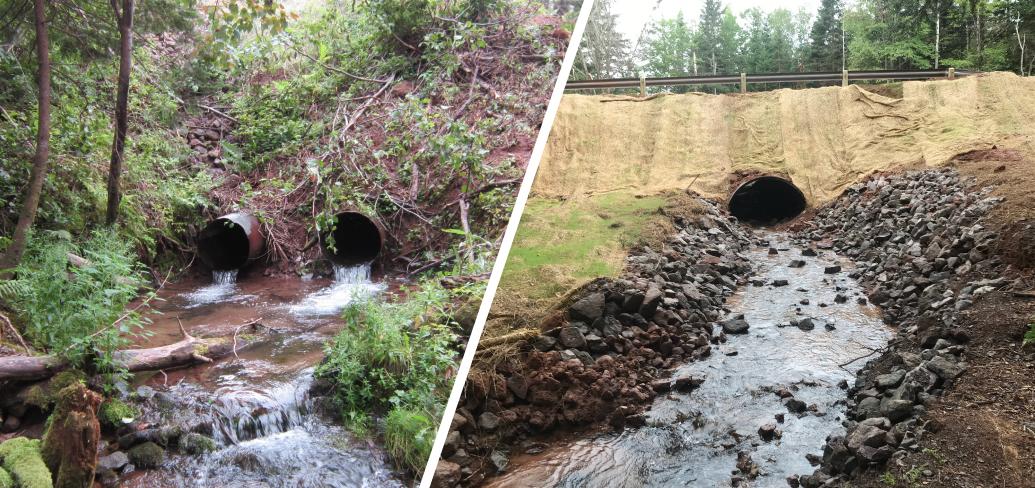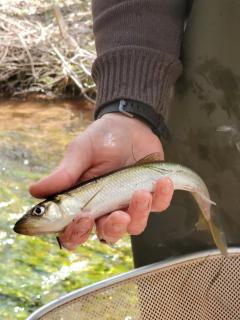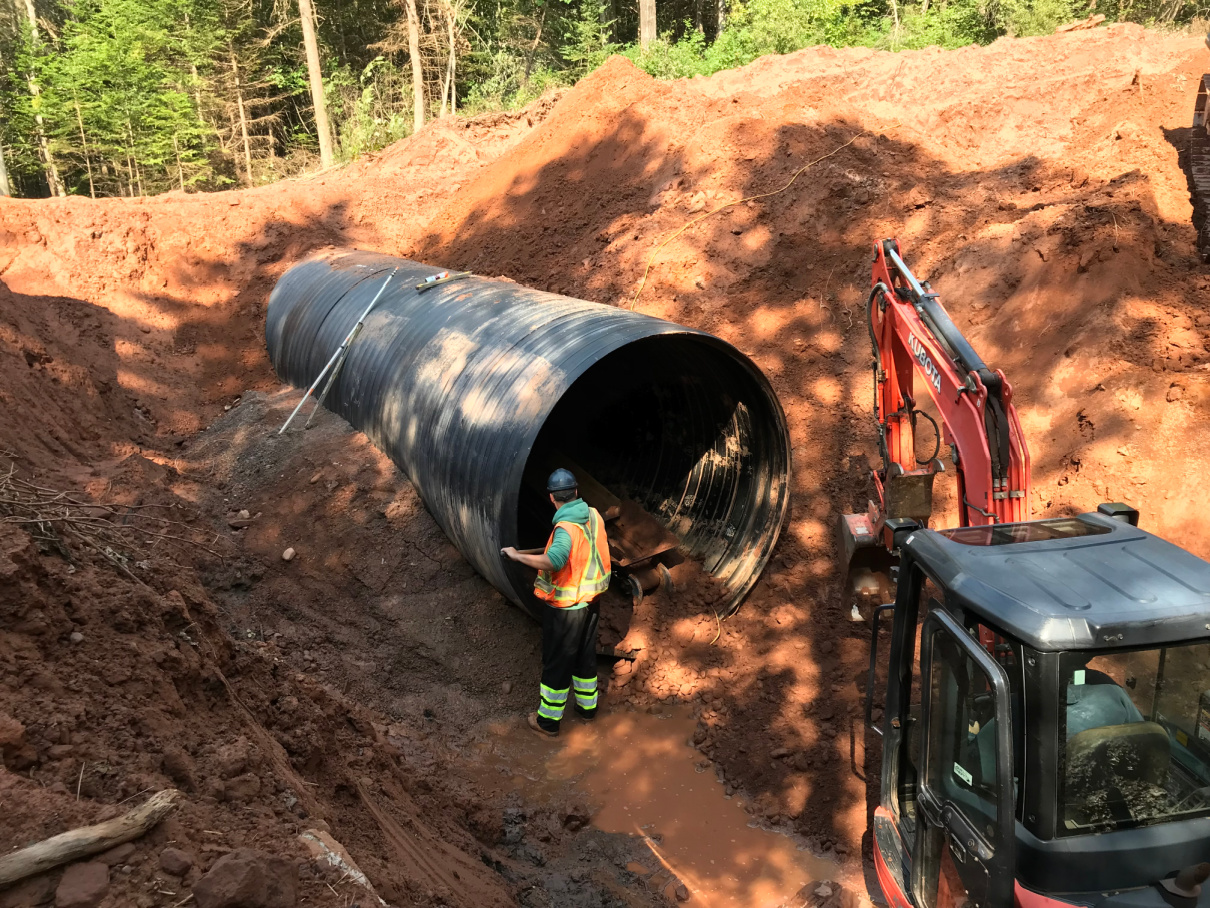Small fish, big impact

It may look like any other culvert, but this particular culvert on the Suffolk Road has a big impact on the health of the river system in the area.
Many locals will recall smelt passing at Tim’s Creek decades ago, but until recently, the smelt avoided this particular stream. That’s because the perched culvert was too big of a jump for the small fish to pass through.
Paul Strain, with the provincial department of Transportation and Infrastructure, had a solution for that problem, and he worked with the Winter River-Tracadie Bay Watershed Association and the federal Department of Fisheries and Oceans to make it happen.
“The key was elevation. Fish don’t do well with steep jumps and drops, and in the case of a perched culvert, they can’t make it through at all.”
The solution was an over-embedded culvert (or stream simulation), an approach that Fisheries and Oceans Canada has been advocating for since the recent modernization of the federal Fisheries Act.
This type of culvert spans the entire creek and gets embedded into the earth so that a natural stream bottom can be built inside, leaving the fish free to travel through without obstruction.
It was the first culvert of its type in the province, and it worked, restoring fish passage to this part of the Winter River for the first time in 50 years.
“For years we have been hearing from recreational fishers that the fish population has been decreasing in our watershed so we knew we had to do something to help,” said Raena Parent of the Winter River – Tracadie Bay Watershed Association. “When the opportunity arose, we were more than happy to work with the Department of Transportation and Infrastructure to make this project happen.”
It’s not only about installing new equipment. The slope had to be perfectly tailored to suit the fish, down to the centimeter. This involved some very precise digging during the installation process.
“I’m sure the installers were a bit skeptical about the minor adjustments that were needed, but it was crucial to get it just right,” Strain said. “Sure enough when we visited during smelt migration, there they were, passing through the new culvert.”
When it comes to watershed management, watershed groups look at everything from a systems standpoint.
“A perched culvert can greatly impede fish passage, which impacts fish populations and the ecosystems they are a part of, which then impacts peoples’ ability to recreationally fish,” Raena added.
“If one part of the system isn't working, you can tell something is wrong from far down the line, so the key is figuring out where to intervene to make the most positive impact.” 
Why are smelts a big deal? Because these little fish are a sign the rest of the stream is healthy.
Rosie MacFarlane, the provincial freshwater fisheries biologist, says that smelts are an important food source for many species of wildlife.
“The adults are a favourite seasonal food for many birds and mammals and the eggs support both invertebrates and fish.” If the smelts can’t make it upstream, it can impact other species.
“Some of our larger, stronger fish like brook trout and Atlantic salmon can make a tougher journey, but weaker fish like American smelt, which come into freshwater in spring to lay their eggs, cannot.”
Many kilometres of historic spawning habitat for smelts are inaccessible, so work continues to restore fish passage.

Raena said, “We're already seeing such amazing results from these culvert replacements. This spring we saw so many smelt eggs at the Tim's Creek culvert, and within only the first few days of the MacAulay’s Creek culvert being replaced, a watershed resident sent me a picture of a huge brook trout in the outlet pool.”
The Winter River-Tracadie Bay watershed covers an area of 14,117 hectares. As part of their Watershed Management Plan that was created to match the vision of local watershed residents, this organization aims to protect and enhance freshwater ecosystems, and enhance recreational opportunities and promote active living.
See more photos on our Flickr album.